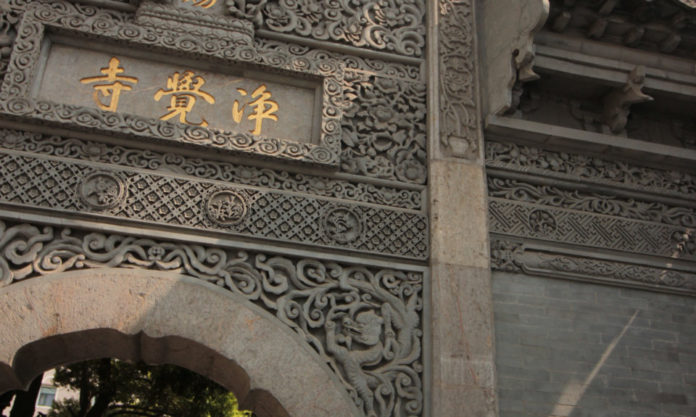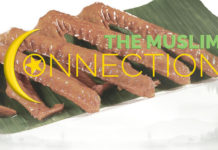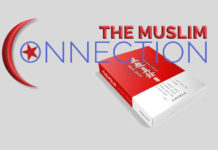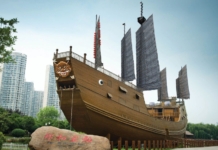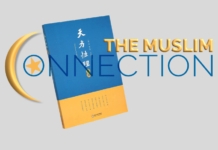Today, the Muslim population in Nanjing might best be described as mostly hailing from Northwestern provinces (Gansu and Ningxia; traditionally more Muslim-populated centres), with a growing, foreign-born community. Due to the tricky identity issue of having the “Hui” ethnicity tied to religion, Nanjing remains home to a significant local-born, ethnically-Hui population, though not many today identify religiously as Muslim.
How many Muslims must have been living in Nanjing to result in the existence of 36 mosques by the end of the late Qing Dynasty? In determining the story of Muslims in Nanjing, one must begin with the question of how Islam came to China. Such records can be found throughout multiple dynasties, with the earliest claim to Muslim visits pointing to a 651 CE visit in the Tang Dynasty, purported to be a delegation issued by the third caliph, Uthman. By 798, the number of visits from the Dashi (大食), the then-blanket term for Arabs or Persians, had capped off at nearly 40.
These long journeys increasingly caused Arab or Persian merchants and traders to settle in significant communities near dynastic capitals. So significant were these that records of a massacre of thousands of Persian merchants in neighbouring Yangzhou in the year 760 were mentioned in two separate Tang historical records, one being the biography of Liu Zhan, Governor of Huaixi (south of the Huai River, including modern-day parts of Anhui Province).
It was not until the Yuan Dynasty, however, that formal records of Muslims living in Nanjing appeared, largely due to their share of political and military positions. As part of Genghis Khan’s strategy of granting superior status to “foreign” ethnicities over the Han, Central and Western Asian populations, categorised as “Semu” (色目) or “various eye colours”, were recruited and utilised in administrative positions throughout the increasingly expanding empire. The Huihui (回回), one sub-category of the 31 included under the Semu, was eventually used to identify Muslims.
During the Yuan Dynasty, many of these new Semu recruits soon joined rank in the military, eventually taking up positions as political officials, and becoming influential in economic and cultural policy. Of these, many Muslims took post in areas of finance, accounting, trade and warehousing. One Yuan Dynasty record of Jiankang (one of the former names of Nanjing) noted 84 Huihui Semu officials between 1275 and 1343, with a 1290 census of neighbourhoods along Jiankang Lu as home to 149 households and nearly 3,000 Semu individuals.
Over time, Hui communities became increasingly involved in political, economic and financial affairs. Furthermore, due to both Yuan and Ming Dynasty assimilationist policies, the Semu were prohibited from marrying within their own ethnic groups, leading to biologically and culturally assimilated Chinese-speaking Muslim communities, forerunners to the modern-day Hui ethnic group.
The Ming Dynasty itself was the height of Hui population growth in Nanjing. Founder of the Ming Dynasty, Zhu Yuanzhang/Emperor Hongwu, was believed to have commanded six deeply-trusted Muslim generals, writing a “Hundred-word Eulogy” in praise of Islam and ordering mosques to be built in Nanjing and elsewhere. Under the Ming Dynasty’s Yongle Emperor, famous explorer, Zheng He, a Chinese Muslim, was also commissioned to complete seven ocean expeditions as far as Africa.
Muslim military leaders who had resided in the early Ming capital of Nanjing were later dispatched to various posts in the southern and northwestern reaches of the empire. As such, Nanjing’s local Muslim population saw great fluctuations in size, eventually peaking at 14.3 percent of the city’s population by the time a census was taken in 1391.
By the Qing Dynasty, the Hui population had stabilised at around 30,000 people. It was during this “golden age”, that they had essentially become fully accustomed to using Chinese and were generationally-distant enough from their Arab and Persian forebears that an Islamic Renaissance took place. Muslim intellectuals of the time re-contextualised Islam with Daoist/Confucian notions, establishing what later came to be known as the Chinese Muslim Jinling School of Thought.
In the Republican Era, Nanjing’s status as capital led a boom in the overall population. According to a 26 December, 1935, report in China Daily (中国日报; a separate entity from today’s publication of the same name), Nanjing’s huihui population comprised 14,032 households with a total of 57,785 individuals. Many settled in the historic Muslim quarter of Qijiawan (七家湾), still standing today a little southeast of Chaotian Palace.
During the KMT’s rule, military leadership included many Hui families, the most famous of whom was general, Bai Chongxi, who served as the Republic’s first defence minister. Nearly 50 percent of working Hui, however, were employed in the food & beverage industry, while another 20 percent worked in handicrafts, such as jewlery and finery. This overwhelming trend towards food, however, meant that a great many Nanjing Hui went on to establish a number of officially-recognised China Time-Honoured Brands (老字号) in Nanjing, including Maxiangxing (马祥兴) on Yunnan Bei Lu, Anleyuan (安乐园) on Wangfu Da Jie and Lvliuju (绿柳居) near Xinjiekou.
Today, outside of the three city-centre mosques, it is these places that are perhaps the most visible remnant of local Muslim history in Nanjing. And it is this ongoing halal food industry legacy that we shall explore in the next edition of The Muslim Connection.


